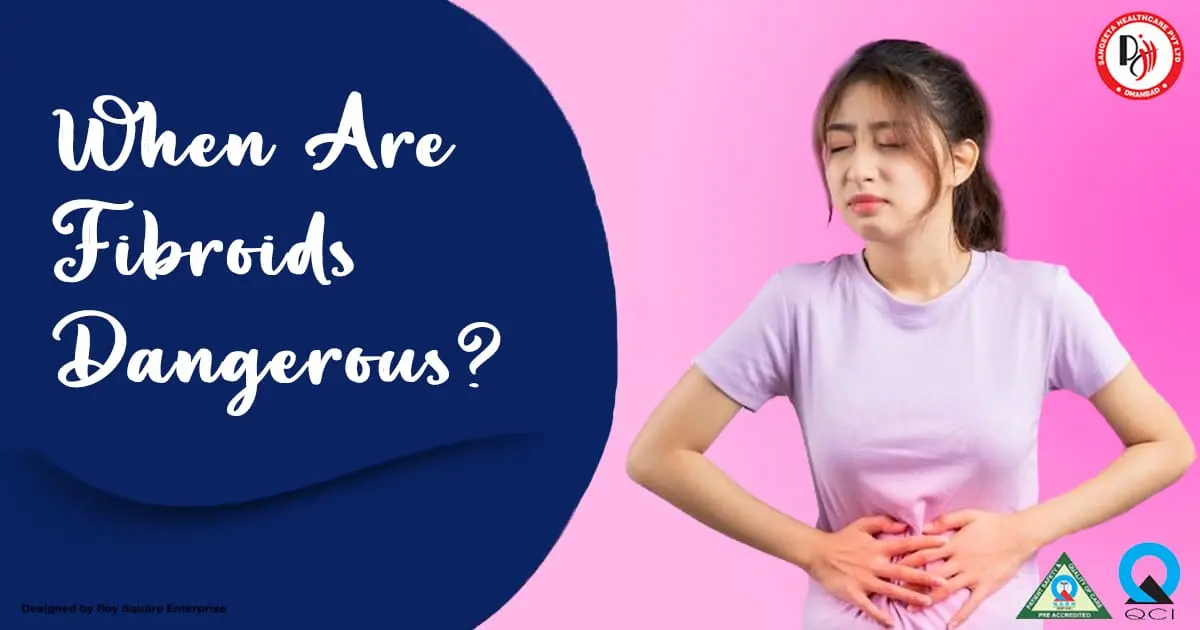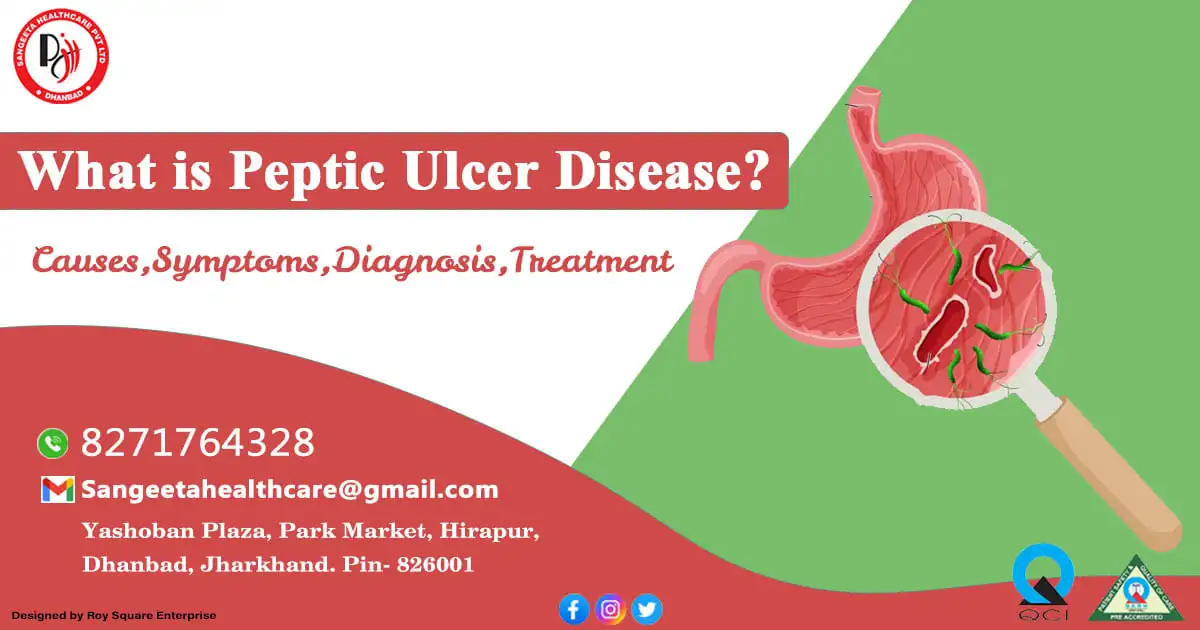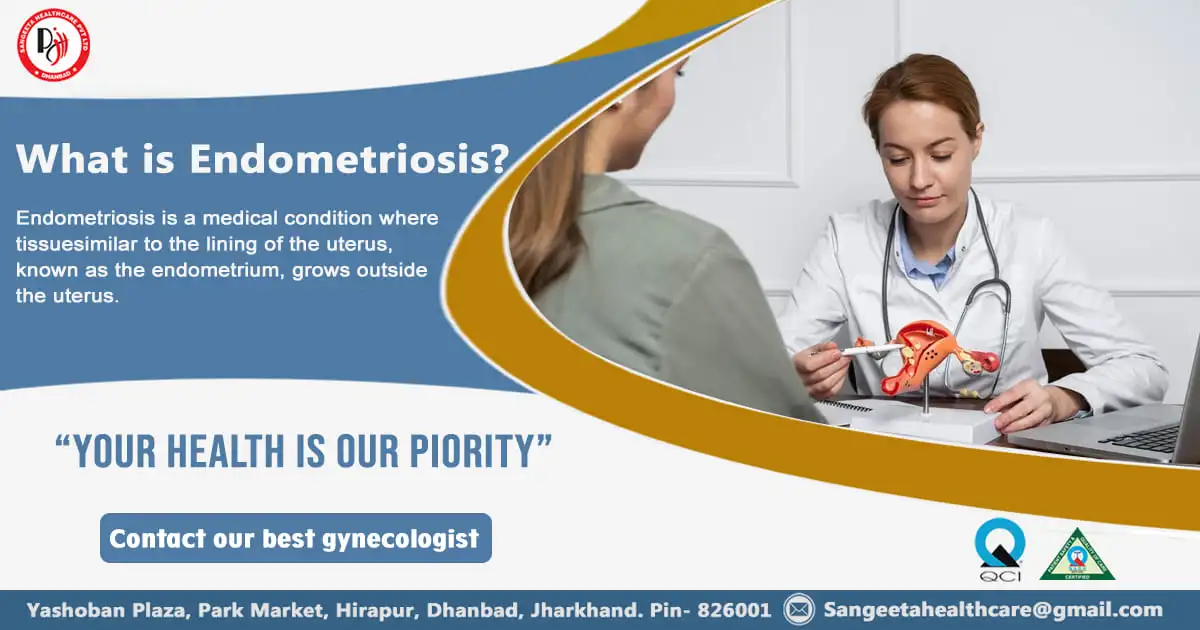Fibroids
Uterine fibroids or Leiomyomas are non-cancerous growths that form inside the uterus. Although often benign, fibroids can cause a range of symptoms and complications for many individuals. In this blog post, we will delve into the causes, symptoms, and treatment options available for fibroids, aiming to provide clarity and understanding for those affected by this condition.
What are Fibroids?
Fibroids are abnormal growths that develop in the muscular wall of the uterus. They vary in size, ranging from tiny seedlings that are undetectable by the human eye to large masses that can distort the shape of the uterus. While the exact cause of fibroids is not fully understood, several factors are believed to contribute to their development, including hormonal imbalances, genetics, and environmental factors.
Symptoms of Fibroids:
The symptoms of fibroids can vary greatly depending on their size, number, and location within the uterus. Some individuals may experience no symptoms at all, while others may encounter significant discomfort and complications.
Common symptoms of fibroids include:
1. Menstrual Irregularities: One of the most common symptoms of fibroids is menstrual irregularities. This can include heavy menstrual bleeding (menorrhagia), prolonged periods, spotting between periods, or irregular menstrual cycles. The presence of fibroids can disrupt the normal functioning of the uterus, leading to changes in the menstrual flow and duration.
2. Pelvic Pain and Pressure: Fibroids can exert pressure on surrounding pelvic organs, leading to pelvic pain and discomfort. Some individuals may experience a dull, aching sensation in the lower abdomen or pelvis, while others may feel sharp or stabbing pains. The severity of pelvic pain can vary depending on the size, number, and location of the fibroids within the uterus.
3. Urinary Symptoms: Fibroids that press against the bladder can cause urinary symptoms such as frequent urination, urgency (sudden and strong urge to urinate), or difficulty emptying the bladder completely. In some cases, fibroids may even lead to urinary retention, where the individual has difficulty urinating altogether.
4. Bowel Symptoms: Fibroids located near the rectum or bowel can exert pressure on these structures, resulting in symptoms such as constipation, difficulty passing stool, or a sensation of rectal fullness. Bowel symptoms associated with fibroids can vary in severity and may worsen during menstruation when fibroids tend to swell due to hormonal changes.
5. Abdominal Enlargement: Large fibroids or multiple fibroids can cause the uterus to enlarge, leading to a noticeable increase in abdominal girth or a feeling of fullness in the abdomen. Abdominal enlargement may be accompanied by other symptoms such as bloating, discomfort, or difficulty fitting into clothing.
6. Pain During Intercourse: Fibroids located near the cervix or within the uterine wall can cause pain or discomfort during sexual intercourse (dyspareunia). This can be due to pressure on sensitive pelvic structures or irritation of the uterine lining caused by friction during intercourse.
Fibroids can manifest in a variety of ways, ranging from subtle discomforts to significant disruptions in daily life. Recognizing the symptoms associated with fibroids is crucial for timely diagnosis and appropriate management. If you’re experiencing any of the symptoms mentioned above or have concerns about your reproductive health, it’s essential to consult with a healthcare provider for further evaluation and guidance. With proper diagnosis and treatment, individuals with fibroids can find relief from their symptoms and improve their overall quality of life.
Diagnosis and Treatment:
Diagnosing fibroids typically involves a combination of medical history review, physical examination, and imaging tests such as ultrasound, MRI, or CT scans. Once diagnosed, treatment options can vary depending on the severity of symptoms, the size and location of the fibroids, and the individual’s reproductive goals.
- Watchful Waiting: In cases where fibroids are small and asymptomatic, a “watchful waiting” approach may be recommended. Regular monitoring through exams and imaging can help track any changes in size or symptoms over time.
- Medications: Certain medications, such as hormonal birth control or gonadotropin-releasing hormone agonists, may help manage symptoms such as heavy bleeding and pelvic pain by regulating hormonal fluctuations.
- Non-Invasive Procedures: Minimally invasive procedures such as uterine artery embolization (UAE) and magnetic resonance-guided focused ultrasound surgery (MRgFUS) can be effective in shrinking fibroids or alleviating symptoms without the need for surgery.
- Surgical Intervention: In cases where fibroids are large, causing severe symptoms, or impacting fertility, surgical options such as myomectomy (removal of fibroids while preserving the uterus) or hysterectomy (removal of the uterus) may be considered.
Different Types of Uterine Fibroid
Leiomyomas, another name for uterine fibroids, are non-cancerous growths that form inside the uterus. While most fibroids are intramural (within the muscular wall of the uterus), there are several distinct types that can develop in different locations. Now, we will explore four specific types of uterine fibroids: broad ligament fibroids, pedunculated fibroids, exophytic fibroids, and parasitic fibroids, shedding light on their characteristics, symptoms, and treatment options.
1. Broad Ligament Fibroids: Broad ligament fibroids are rare and occur within the broad ligament, a band of connective tissue that supports the uterus. These fibroids can grow to a considerable size and may not cause noticeable symptoms until they reach a certain size or position that puts pressure on surrounding organs. Symptoms may include pelvic pain, urinary frequency, and constipation. Treatment options for broad ligament fibroids may include observation, hormonal therapy, or surgical removal, depending on the severity of symptoms and the patient’s reproductive goals.
2. Pedunculated Fibroids: Pedunculated fibroids are fibroids that grow on a stalk (peduncle) attached to the uterine wall. They can either protrude into the uterine cavity (submucosal) or extend outward from the uterine wall (subserosal). Pedunculated fibroids may cause symptoms such as pelvic pain, heavy menstrual bleeding, and pressure on surrounding organs. Treatment options for pedunculated fibroids may include medication to manage symptoms, minimally invasive procedures such as laparoscopic myomectomy to remove the fibroid while preserving the uterus, or hysterectomy in severe cases.
3. Exophytic Fibroids: Exophytic fibroids, also known as subserosal fibroids, grow outward from the outer surface of the uterus. These fibroids may cause symptoms such as pelvic pain, pressure, and a feeling of fullness in the abdomen. While exophytic fibroids may not directly affect fertility, they can impact reproductive health by interfering with the implantation of a fertilized egg or causing complications during pregnancy. Treatment options for exophytic fibroids may include observation, medication to manage symptoms, or surgical removal depending on the severity of symptoms and the patient’s reproductive goals.
4. Parasitic Fibroids: Parasitic fibroids are a rare type of fibroid that occurs when a fibroid loses its blood supply from the uterus and attaches to another organ, such as the ovaries or the abdominal wall, for a continued blood supply. These fibroids may cause symptoms such as pelvic pain, abdominal swelling, and urinary or bowel symptoms. Treatment for parasitic fibroids typically involves surgical removal to alleviate symptoms and prevent complications.
Uterine fibroids come in various forms, each with its own characteristics, symptoms, and treatment considerations. Broad ligament fibroids, pedunculated fibroids, exophytic fibroids, and parasitic fibroids present unique challenges in diagnosis and management. Individuals experiencing symptoms suggestive of uterine fibroids should seek medical evaluation for proper diagnosis and personalized treatment planning. With advancements in medical technology and a comprehensive understanding of fibroid types, individuals can receive appropriate care to address their symptoms and improve their quality of life.

Understanding Fibroid Sizes: When Should You Be Concerned?
Fibroids, non-cancerous growths that develop in the uterus, come in various sizes and can affect individuals differently. While many fibroids cause no symptoms and are harmless, others can lead to discomfort, complications, and health risks. In this blog post, we’ll explore the different sizes of fibroids and when they might pose a concern for your health.
Small Fibroids:
Small fibroids, typically less than 3 centimeters (about 1.2 inches) in diameter, are often asymptomatic and may not require treatment. These tiny fibroids are usually detected incidentally during routine pelvic exams or imaging studies for other reasons. While small fibroids may cause minimal discomfort, they generally don’t pose significant health risks.
Medium-Sized Fibroids:
Medium-sized fibroids range from 3 to 10 centimeters (about 1.2 to 3.9 inches) in diameter. While they may still be asymptomatic in some cases, medium-sized fibroids can cause symptoms such as heavy menstrual bleeding, pelvic pain, pressure on the bladder or bowel, and fertility issues. Depending on their location and symptoms, treatment options for medium-sized fibroids may include medication, minimally invasive procedures, or surgery.
Large Fibroids:
Large fibroids, measuring over 10 centimeters (about 3.9 inches) in diameter, are more likely to cause noticeable symptoms and complications. These fibroids can distort the shape of the uterus, cause significant pelvic pain and pressure, and lead to complications such as anemia due to heavy menstrual bleeding. Large fibroids may also interfere with fertility and increase the risk of pregnancy complications. Treatment for large fibroids may involve medication to manage symptoms, minimally invasive procedures to shrink the fibroids, or surgical removal, depending on the severity of symptoms and the patient’s reproductive goals.
When Are Fibroids Dangerous?
While fibroids of any size can cause discomfort and complications, certain factors may indicate a higher risk of complications:
1.Rapid Growth: Fibroids that grow rapidly may indicate a more aggressive type or an underlying hormonal imbalance, requiring closer monitoring and evaluation.
2.Location: Fibroids located near critical structures such as the bladder or bowel may cause more pronounced symptoms and complications.
3.Pregnancy: Fibroids that increase in size during pregnancy or cause complications such as miscarriage, preterm labor, or abnormal fetal position may require prompt medical attention.
4.Severe Symptoms: Fibroids causing severe symptoms such as intense pelvic pain, significant blood loss, or urinary/bowel dysfunction may necessitate immediate medical intervention.

While fibroids of any size can impact an individual’s health and well-being, larger fibroids and those causing severe symptoms or complications may require medical evaluation and treatment. If you’re experiencing symptoms suggestive of fibroids or have concerns about your reproductive health, it’s essential to consult with a healthcare provider for proper diagnosis and personalized treatment recommendations. With timely intervention and appropriate management, individuals with fibroids can find relief from their symptoms and improve their quality of life.
Fibroids are a common gynecological condition that can significantly impact a person’s quality of life. While they are usually benign, the symptoms they cause can be disruptive and distressing. It’s essential for individuals experiencing symptoms of fibroids to seek medical evaluation and explore treatment options tailored to their unique circumstances. With proper diagnosis and management, individuals with fibroids can find relief from their symptoms and regain control of their health and well-being.











